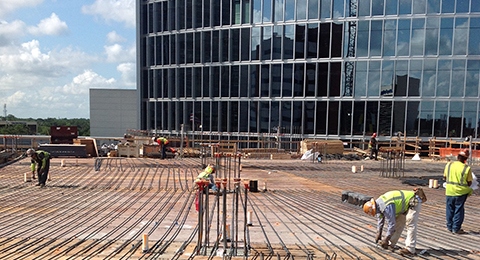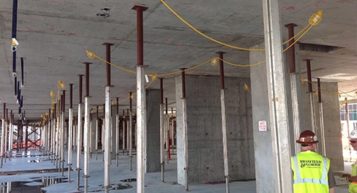
Excellent healthcare facilities are essential to vibrant communities. The recently constructed Florida Hospital for Women is a great addition to the healthcare system in Orlando, Florida. The way that the geotechnical engineer collaborated with the design team to expedite its construction demonstrates how collaboration between key design partners can produce significant dividends in the budget-driven and time-sensitive healthcare industry, ultimately benefiting an entire community.
“This project is a prime example of the power of collaboration among the design and construction team members paying big dividends,” said Amr Sallam, Ph.D., P.E., Terracon’s principal geotechnical engineer. In fact, the partnership led to a final project design that saved the client more than $1 million and allowed the facility to open two months earlier to begin serving the community.
Facing settlement challenges with experienced team
The new facility would subject columns to loads of up to 2,000 tons. Such loads are routinely founded on deep foundations, extending 75 feet or more into the ground. Conventional shallow foundations may create excessive settlements under such heavy loads. In addition to the challenge of high column loads, this was a constricted urban site on the main campus, adjacent to a heavily used rail line, with connections to adjacent existing buildings, adding complexity.
Terracon believed that alternatives to deep foundations could save time and money, but it took collaboration with the design and construction team to consider its suitability for the project. Understanding both the geotechnical and structural aspects of the design, Sallam progressed beyond a typical geotechnical engineering study to an interactive design with the structural engineer, Kevin Casey, P.E., (Paul J. Ford), all in collaboration with the contractor (Brasfield and Gorrie) and the owner’s representative, Mohammed Alai, A.I.A. (with Florida Hospital).
Mat foundation saves construction time
After considering several options at the preliminary stage, Terracon proposed the use of a mat foundation. The design of a mat for such heavy and variable loading conditions required an iterative process between the structural engineer running the SAFE model, the structural engineer’s finite element software program, and the geotechnical engineer utilizing PLAXIS model, a finite element software. The structural model generated a preliminary contact pressure distribution. Terracon used the PLAXIS model to estimate settlement, redefining the contact pressure estimates using aspects of slab rigidity and subgrade support. The revised contact pressures were input into the structural model, and this iterative approach was repeated until estimated settlements became congruent.
The iteration produced a final mat design with predicted maximum settlements of 2.5 inches at the interior core to about 1.5 inches along two adjacent buildings.
The contractor determined that the cost of the mat foundation would be slightly lower than deep foundations. A more substantial benefit associated with the mat alternative is reduced construction time. The client and design team decided that the expected settlements were acceptable, and the estimates allowed the design of appropriate connection points to existing structures. The design achieved a reduction in the construction schedule of two months. Settlement monitoring confirmed settlements were well within the maximum values predicted.
Since opening in April 2016, the Florida Hospital for Women has provided enhanced medical care to the Orlando community, providing additional labor and delivery suites, operating rooms, postpartum bed space and an area for equipment that offers minimally invasive surgery options for patients.




 Join our thriving community of 70,000+ superintendents and trade professionals on LinkedIn!
Join our thriving community of 70,000+ superintendents and trade professionals on LinkedIn! Search our job board for your next opportunity, or post an opening within your company.
Search our job board for your next opportunity, or post an opening within your company. Subscribe to our monthly
Construction Superintendent eNewsletter and stay current.
Subscribe to our monthly
Construction Superintendent eNewsletter and stay current.